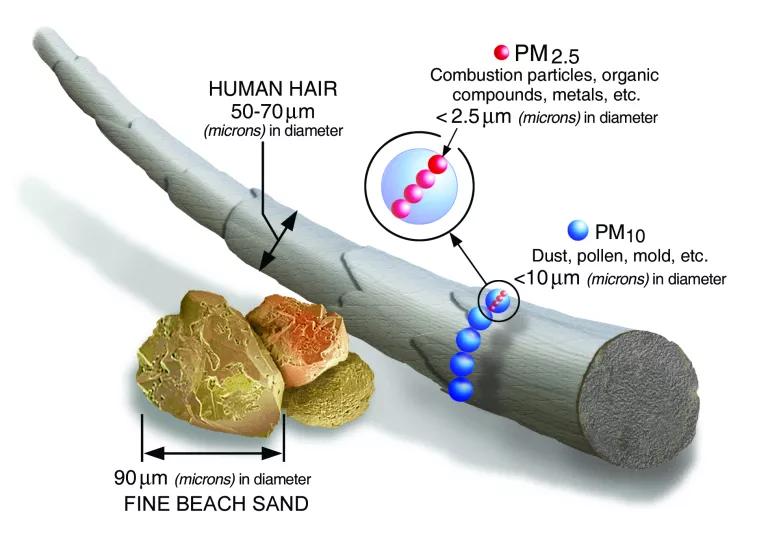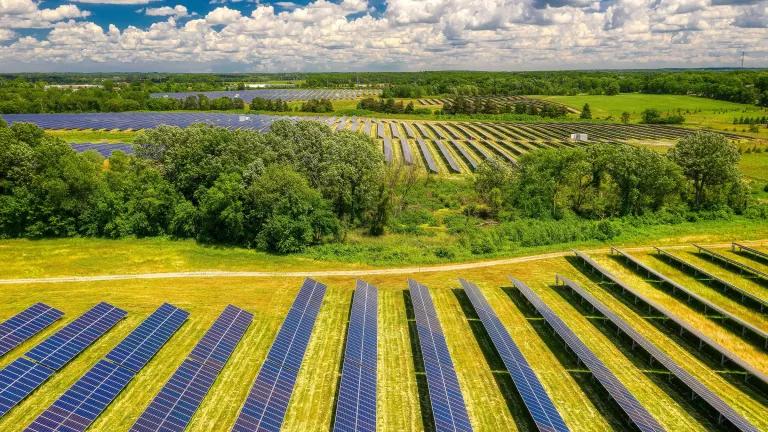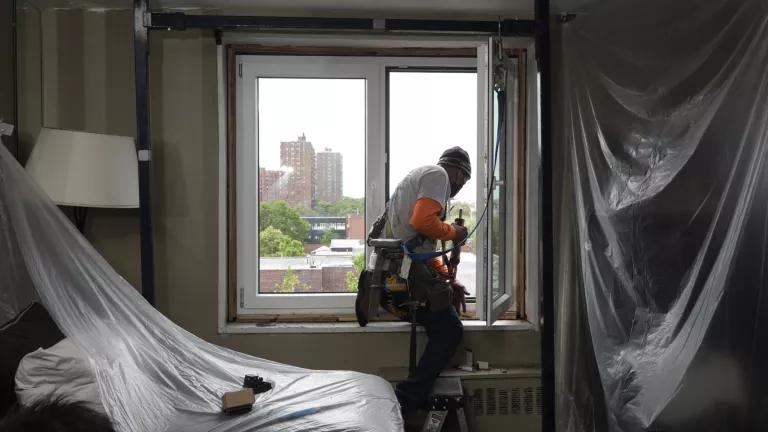Energy Efficiency Saves Lives, Avoids Huge Health Costs
Energy efficiency is helping everyday Americans lead healthier lives, but we can do even better.

Energy efficiency helps cut down emissions of fine particulate matter (PM2.5), tiny particles of pollution that can be inhaled deep into our lungs.
U.S. Environmental Protection Agency
Achievable and commonsense energy efficiency measures could help save six American lives every day and avoid up to $20 billion in health harms each year. That’s the takeaway from a new report by the American Council for an Energy-Efficient Economy (ACEEE) and Physicians for Social Responsibility (PSR), which set out to answer a simple question: How would our health benefit if every state and major city across the country reduced its annual electricity consumption by 15 percent?
Power plants that burn coal, oil, or natural gas release small particles that can embed deep in our lungs (fine particulate matter), gases that irritate our respiratory systems (like sulfur dioxide), and gases that interact with sunlight to form hazardous smog (nitrogen oxides). This pollution has been linked to a variety of serious health harms, including asthma attacks, heart attacks, and lung cancer.
The good news is that making homes and businesses more energy efficient is a cost-effective way to avoid pollution from power plants—and pollution from the use of heating oil and natural gas inside homes. Smarter energy use means we don’t have to generate as much of it to power our homes and businesses.
Using publicly available models from the U.S. Environmental Protection Agency, ACEEE and PSR found that reducing electricity consumption 15 percent nationwide for just one year could cut fine particulate pollution by 11 percent, nitrogen oxides by 18 percent, and sulfur dioxide pollution by 23 percent. The money saved on health care costs—mostly thanks to fewer adult deaths—could pay the annual health insurance premiums for nearly 3.6 million families.
Benefits to coal states
States that use a lot of coal to generate electricity—or that are located close to coal states—would see some of the most significant health benefits from increased energy efficiency. In these top 10 states, per person benefits ranged from $98 per year to $184 per year:
- West Virginia: $184
- Kentucky: $148
- Pennsylvania: $140
- Ohio: $137
- Indiana: $128
- Tennessee: $124
- Alabama: $106
- Michigan: $105
- Delaware: $103
- Arkansas: $98
How would we get to 15 percent?
The report noted that many states have already taken steps to reduce energy consumption by 15 percent or more. Many untapped opportunities still exist, however, at all levels of government. The ACEEE-PSR report suggests more extensive adoption of these proven strategies:
- Mandatory energy-savings targets for electric utilities;
- More building energy standards;
- New energy and water use standards for appliances and equipment; and
- Regional carbon-cutting programs like the Regional Greenhouse Gas Initiative.
Even more benefits
Importantly, the report numbers don’t capture the total health benefits of increasing energy efficiency.
For one thing, the authors also found that increased energy efficiency could cut carbon dioxide pollution by 14 percent, but didn’t try to quantify the associated health benefits. Climate change caused by carbon pollution brings a wide range of health harms, including heat related-illnesses and deaths, the myriad dangers of more extreme weather, and disruptions to healthcare services.
Second, energy efficiency can help address social and economic determinants of health, like energy burden—the portion of household income that goes to utility bills—and housing stability and quality. For example, a 2016 analysis by Energy Efficiency for All and ACEEE found that low-income households in the United States spend more than three times the share of their income on utilities than non-low income households.
Lowering bills through energy efficiency can help reduce financial insecurity and minimize the need to choose between paying utility bills and food or rent. Energy efficiency measures like weatherization also improve the quality and safety of people’s homes, for instance by dealing with leaky windows and doors that let in unhealthy moisture and outdoor air pollution. Finally, the economic opportunities that come along with a cleaner, more efficient energy sector can lift entire communities up with family-sustaining wages. In fact, more than 2.2 million people currently work in the energy efficiency sector—researching, manufacturing, and installing energy-saving improvements.
Energy efficiency works
The findings in the ACEEE-PSR report aren’t just hypothetical: Energy efficiency is already helping everyday Americans lead healthier lives.
States and cities across the country—as well as our leaders in the federal government—have an opportunity to boost those health benefits even higher by implementing standards on energy-sucking appliances, funding research on better energy-saving technologies, and making energy efficiency central to the fight against climate change.



